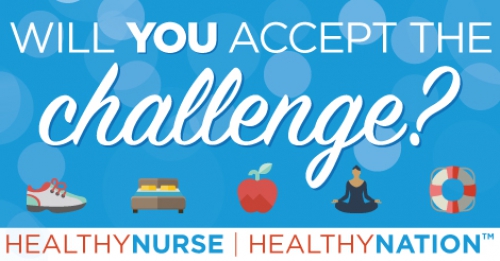Eliminating Hepatitis B: Understanding New Prevention Guidelines
Published
By Stephanie Campbell, PhD, Senior Medical Director, Dynavax

The United States (U.S.) Department of Health and Human Services estimates that approximately two million Americans are now living with hepatitis B virus (HBV)1. This may seem to threaten the agency’s goal to eliminate viral hepatitis by 2030, yet there have been meaningful changes in prevention guidelines – including by the U.S. Centers for Disease Control and Prevention’s Advisory Committee on Immunization Practices (ACIP) -- to increase adult hepatitis B vaccination.
(Image credit: Centers for Disease Control and Prevention)
While government agencies have made elimination a priority, front-line healthcare workers like you are at the heart of it all. Here’s what you need to know to be a part of the HBV elimination movement:
About Hepatitis B
First, it’s important to review what HBV is and why it’s a serious public health threat:
- HBV can cause liver infection and is transmitted by blood and other bodily fluids. Symptoms of HBV infection include fever, fatigue, dark urine, loss of appetite, nausea, vomiting, and abdominal pain.2
- While acute HBV symptoms can resolve naturally for most people, those who develop chronic infection are often presented with serious health risks – among them cirrhosis and liver cancer.1
- What is tricky about HBV transmission, is that sometimes people don’t know they have it – approximately 50 to 70% of infected people are asymptomatic, meaning they can transmit the virus without knowing it.1
- The CDC estimates there were 13,800 new cases of acute HBV in the U.S. in 2022, with most of those going unreported1,3 and about 2.4 million Americans living with chronic hepatitis B.1Eliminating the virus is critical to stopping the spread and ensuring no one is at risk for the serious health effects it presents.
Until recently, the strategy in the U.S. for eliminating HBV included both universal childhood vaccinations, which began in 1991, and a recommendation that adults with specific risk factors – including sharing contaminated needles or syringes and/or having unprotected sex with multiple partners – be vaccinated. As you likely know, it is also recommended that most healthcare providers, including nurses, be vaccinated – because of possible exposure to blood and bodily fluids.
But this risk-based model was not enough to protect everyone at risk for HBV. It resulted in low vaccination rates, and left providers with the task of identifying patients at-risk – a challenge due to a variety of factors, including stigma.9 This left the burden of HBV highest among some adult age groups. Between 2016-2021, 80% of acute cases were seen in adults aged 30–59 years.4,5 With four out of five of those born before 1991 still unvaccinated, the CDC is calling for action.6, 7, 8
To move the U.S. closer to viral hepatitis elimination, in 2022, ACIP expanded guidance beyond risk factors, recommending all previously unvaccinated adults ages 19 to 59 be vaccinated for HBV9-with the goal of increasing vaccine coverage and decreasing cases of HBV.8 Further, the updated recommendation extends to those aged 60 years and older with known risk factors.6 As we’ve seen, it’s not always easy to identify those with risk factors, so the ACIP’s guidance for clinicians is to offer vaccination to all adults, shifting the responsibility for vaccine consideration from patient to provider.9
Help Reach Patients Who Need Protection from Hep B
The expanded recommendations represent a positive shift, but the real success will be dependent on sharing information with patients and increasing the number of vaccinated adults.
As a nurse, you can help. Here’s how:
- Help identify adults who need to be vaccinated: armed with the knowledge of updated recommendations, talk to your patients to understand if they are protected or need to be “caught up” on preventative measures.
- Encourage vaccine series completion: understand that hepatitis B vaccines are given as a two- or three-dose series and emphasize with your patients the importance of completing the entire series.
- Be aware of barriers to patient care: recognize your patients may be facing barriers to vaccination including cultural and language differences, lack of knowledge about chronic HBV, and stigma associated with the disease.
- Educate your teams: like any shift in health care, awareness of the expanded recommendations is still growing. Help spread the word with colleagues, including nurses and other providers.
- Be a vaccine advocate in your community: many people still have concerns and questions about vaccines in general – HBV and others. As a nurse, you are a key resource in sharing with friends and families about the important role vaccines play in protecting community health. The healthcare landscape is evolving and nurses serve as a valuable source of truth. Let’s eliminate hepatitis B - your help is essential.
[1] Office. Hepatitis B Basics. HHS.gov. Published January 30, 2019. https://www.hhs.gov/hepatitis/learn-about-viral-hepatitis/hepatitis-b-basics/index.html
[2] Haber P., Schillie, S., Hepatitis B in Epidemiology and Prevention of Vaccine – Preventable Diseases. 2021. Hamborsky J, Kroger A, Wolfe S, eds.14th edition. Public Health Foundation: Washington, DC.
[3] 2022 Hepatitis B | Viral Hepatitis Surveillance Report | CDC. www.cdc.gov. Published April 3, 2024. https://www.cdc.gov/hepatitis/statistics/2022surveillance/hepatitis-b.htm
[4] 2019 Viral Hepatitis Surveillance Report | CDC. www.cdc.gov. Published May 27, 2021. https://www.cdc.gov/hepatitis/statistics/2019surveillance/index.htm
[5] CDC. Hepatitis B - Vaccination of Adults | HBV | Division of Viral Hepatitis | CDC. www.cdc.gov. Published November 8, 2019. https://www.cdc.gov/hepatitis/hbv/vaccadults.htm
[6] Murthy N. Advisory Committee on Immunization Practices Recommended Immunization Schedule for Adults Aged 19 Years or Older — United States, 2022. MMWR Morbidity and Mortality Weekly Report. 2022;71. doi:https://doi.org/10.15585/mmwr.mm7107a1
[7] Weng MK, Doshani M, Khan MA, et al. Universal hepatitis B vaccination in adults aged 19-59 years: updated recommendations of the Advisory Committee on Immunization Practices—United States, 2022. MMWR Morb Mortal Wkly Rep. 2022;71(13):477-483. doi:10.15585/mmwr.mm7113a1
[8] He WQ, Guo GN, Li C. The impact of hepatitis B vaccination in the United States, 1999-2018. Hepatology. 2022;75(6):1566- 1578. doi:10.1002/hep.32265
[9] Weng MK. Universal Hepatitis B Vaccination in Adults Aged 19–59 Years: Updated Recommendations of the Advisory Committee on Immunization Practices — United States, 2022. MMWR Morbidity and Mortality Weekly Report. 2022;71. doi:https://doi.org/10.15585/mmwr.mm7113a1

Not a member of Healthy Nurse, Healthy Nation (HNHN) yet? Join today!
Sign up for our monthly challenges!
Blog Safety
04/30/2024 9:00am CDT



Post a Comment or Question